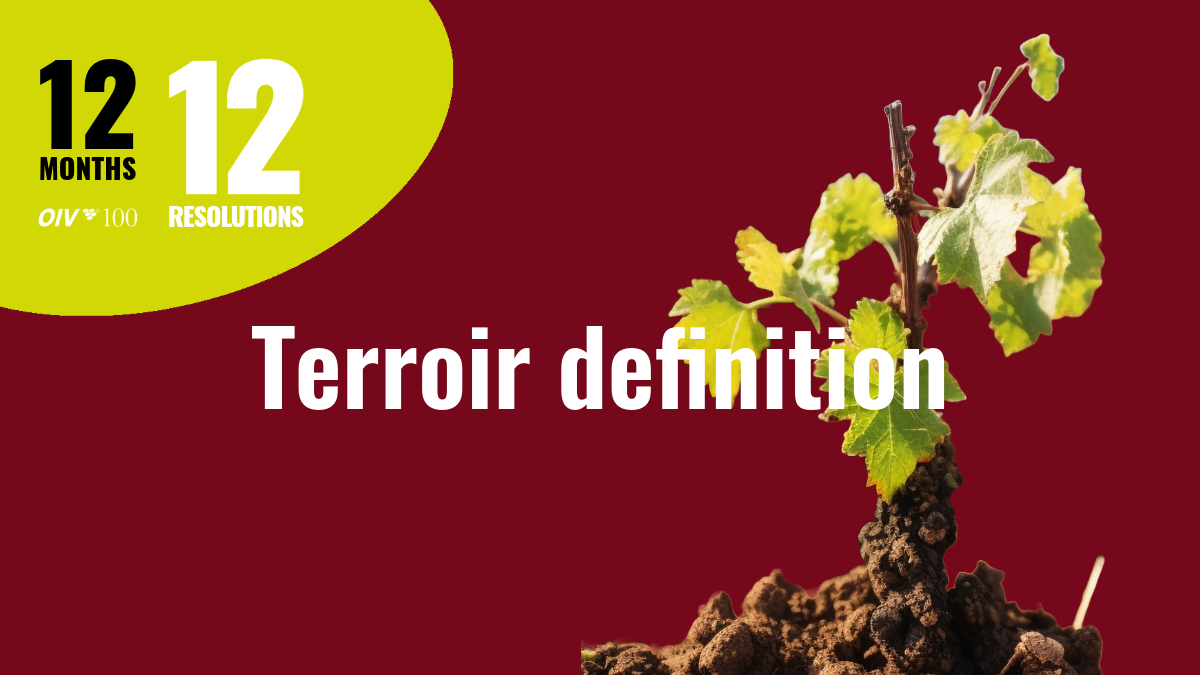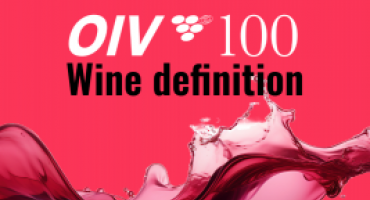The OIV celebrates its 100 years, marking a century of contributions to the vine and wine sector. It is through its resolutions that the Organisation plays a fundamental role in the sector.
In this centenary year, we will be highlighting 12 resolutions. Each month, we will bring to light an OIV resolution that has left its mark on the vitivinicultural scene.
Time now for the “Terroir” definition: a milestone in the OIV resolutions’ history.


Vitivinicultural “terroir” is a concept which refers to an area in which collective knowledge of the interactions between the identifiable physical and biological environment and applied vitivinicultural practices develops, providing distinctive characteristics for the products originating from this area. “Terroir” includes specific soil, topography, climate, landscape characteristics and biodiversity features.
It took almost 10 years of discussions until the OIV Viticulture Commission experts reached a consensus on this harmonised definition of “Terroir”. Reaching this complex and worldwide definition has been a great achievement for the OIV.
In the draft resolution path, the “International Symposium on Terroir and Landscape” organised in Bordeaux and Montpellier in 2006, under the patronage of the OIV, was a pivotal event providing significant inputs to the works of the OIV Expert’s Group “Viticulture Environment and Climate Change” to advance the “Terroir” definition.
Finally, on 25 June 2010, in Tbilisi (Georgia), the OIV General Assembly adopted RESOLUTION OIV/VITI 333/2010, settling the DEFINITION OF VITIVINICULTURAL “TERROIR”.
The “Terroir” concept
explained by Benjamin Bois (former President of the OIV Viticulture Commission: 2015-2018)
Geographical origin is closely associated with the quality of grapevine products, and in particular wine. This connection between the place and the taste of agricultural products, probably dating back to antiquity, was formalised in the notion of “terroir”. Term of French origin appearing in the 12th century to designate an agricultural area, then a soil conferring singular properties to wine, the terroir has become in the 20th century a concept opening the influence of the place on the quality of the product to a very large number of natural and anthropogenic elements1. Thus, the soil, the climate, the terrain, but also the biological environment of the grapevine are all natural factors that interact with the plant, whose varieties or even clones planted and grown according to technical routes chosen by the operator, will produce grapes whose characteristics are intrinsically linked to these different factors. Regarding wine, the methods of vinification and aging, sometimes very specific to a wine region, will lead to the development of a product which smell, and flavour are characteristic of the place of production of wine: a region, a village, or even a single parcel.
The value of the OIV reference on “Terroir”
by Peter Hayes, Honorary President of the OIV
Through the contributions of experts across the many disciplines (soil, climate, grapevine, and social sciences, enology, economy, and marketing) the much-anticipated OIV/VITI 333/2010 DEFINITION OF VITIVINICULTURAL “TERROIR” has established a clear global reference for this complex and widely used term.
Given that “terroir” is a marketing and promotion term of choice for many in PR and media and offers guidance for much regional and industry policy and practice such as denomination of origin, the broad acceptance and consistency in the use of “terroir” warrants ongoing explanation and education for our many, diverse, users and audiences.
__________________________
1 Leturcq, S. (2020). Le terroir, un concept anhistorique. In J.-L. Yengué & K. Stengel (Éds.), Le terroir viticole (p. 25‑33). Presses universitaires François-Rabelais. https://doi.org/10.4000/books.pufr.28205
